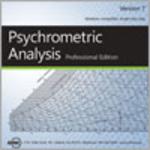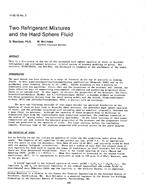A national laboratory tested radiant barriers in attics of three unoccupied research houses located near Knoxville, TN. The purpose of these tests was to determine the effect of moisture condensation on the underside of perforated horizontal radiant barriers during the winter, The houses were operated at high indoor relative humidities (45% and 55% at 70°F). Attic moisture conditions were monitored with both instrumented measurements and visual observations. The observations showed that moisture went through a diurnal cycle at the research houses. Moisture could condense on the bottom surface of the horizontal radiant barrier in weather below 35°F, but it would also dissipate to the attic air during a normal Tennessee winter afternoon, leaving the barrier dry, However, in long periods of subfreezing weather, all condensation did not vaporize and some remained on the surface throughout the day. The data showed that a moisture cycle occurring on a perforated horizontal barrier during a typical Tennessee winter caused no structural wet insulation, or stained ceiling problems to the research houses, even though the houses were maintained at unusually high indoor relative humidities. Care should be taken in extrapolating the observation of this research to locations with prolonged periods of subfreezing weather where the diurnal moisture cycle under the barrier could be quite different. Further testing of horizontal barriers in cold climates is recommended.
Citation: ASHRAE Transactions, vol. 95, pt. 2, Vancouver, BC 1989
Product Details
- Published:
- 1989
- Number of Pages:
- 9
- File Size:
- 1 file , 1.2 MB
- Product Code(s):
- D-27156


